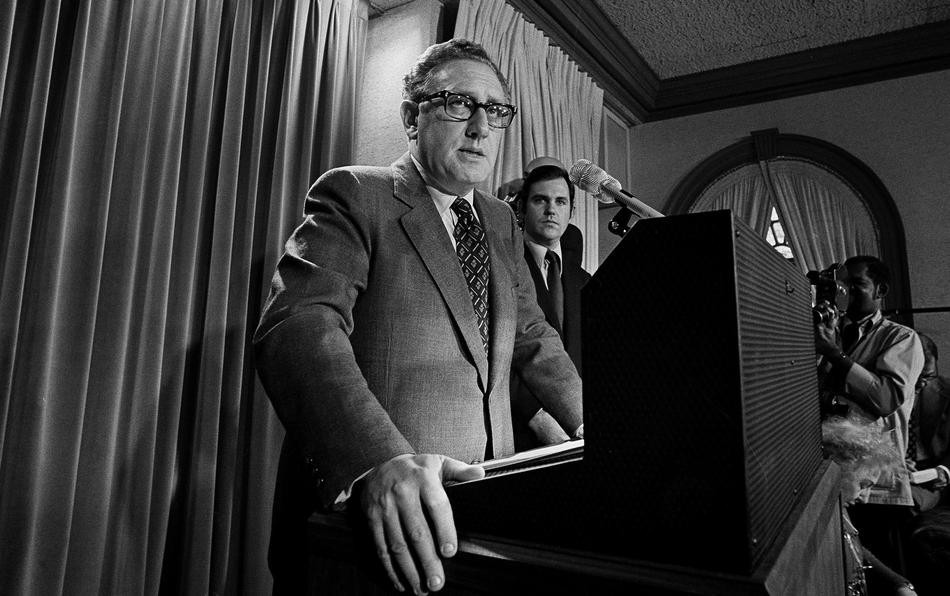East Pakistan had the lowest standard of living in Asia with no resources, Kissinger said

More than two months after the launch of Operation Searchlight to suppress a revolutionary movement in East Pakistan, the military junta led by General AM Yahya Khan in late May agreed to accept some of the Six-Point demands towards a political settlement.
But the ruthless ruler was procrastinating over the issue as he complained to the US against India over the latter's support for the Mukti Bahini and reinforcing troops along the border. At the same time, Pakistan sent its troops to the border to prevent direct military intervention as the refugee influx reached a staggering 100,000 per day.
US intelligence officials predicted that a fully-fledged war between Pakistan and India was imminent and could undermine US interests in South Asia.
During a conversation with US President Richard Nixon on June 4, his National Security Adviser Henry Kissinger predicted that if East Pakistan became independent, it would become a cesspool.
“It is going to be 100 million people, they have the lowest standard of living in Asia…no resources. They're going to become a ripe field for communist infiltration.
“And then they're going to bring pressure on India because of West Bengal. So that the Indians in their usual idiotic way are playing for little stakes, unless they have in the back of their minds that they could turn East Pakistan into a sort of protectorate that they could control from Calcutta."
The previous day, Kissinger told US Ambassador to India Kenneth B Keating: “East Pakistan will eventually become independent… The problem is how to bell the cat. The President has chosen to do it gradually.”
Earlier, senior officials at the Washington Special Actions Group (WSAG) meetings mentioned that Pakistan's capacity and logistics would not last more than three weeks and that its troops would face hurdles during monsoon when half of the country is flooded.
Moreover, India was assisting the East Pakistan guerrillas with training and arms along the border and had already extended support for the provisional government.
Why was Bangladesh's future bleak?
The chances of East Pakistan getting separated from West Pakistan increased sharply following the December 1970 elections, which reflected the people's resistance against exploitation and dominance.
Bangladesh's future under the rule of Sheikh Mujibur Rahman's Awami League would not be a smooth journey either, the Central Intelligence Agency (CIA) said in an intelligence memorandum dated March 1, 1971.
The document, titled “East Pakistan: An Independent Nation?”, gives a glimpse of erstwhile East Pakistan's strengths and limitations, from agriculture to industrial growth and poor condition of the Bengali army men.
It said that an independent East Pakistan would begin with some assets, notably in the political realm but also including an ethnically homogenous population. But it would “face economic problems of staggering proportions because of its dearth of natural resources, its burgeoning population, and its lack of capital, economic infrastructure, and entrepreneurial and technical skills.”
The dominant agricultural sector – mostly dependent on jute – could make little headway unless flood waters were controlled, the CIA said, adding that the process would require considerable capital.
The CIA underscored the need for more workers with technical skills for the development of an independent East Pakistan.
The secret document was prepared by the Office of Current Intelligence and coordinated within the Directorate of Intelligence.
Rapid population growth was mentioned as the top economic factor in the report, estimating the number of people to be 73-75 million in East Pakistan, a land area about the size of Florida or Arkansas, with a 90% rural population and a 20% literacy rate.
There had been little private investment in East Pakistan in comparison with the West wing, accounting for about 25% of the national total. Capital was largely in the hands of a few wealthy families who had migrated from Pakistan, India and Myanmar.
Much of the managerial class in East Pakistan was “composed of Urdu-speaking Muslim refugees [known as Biharis] from India, who have never been accepted by the Bengalis and who would probably move to West Pakistan if the East wing became independent.”
The agriculture sector used to face massive setbacks due to annual flooding and drought, while the country was also subject to high salinity and devastating cyclones. The November 1970 cyclone killed at least 500,000 people in the coastal areas.
East Pakistan was also facing power shortages and frequent outages due to lack of mineral resources. Until 1970, the country had only one gas field in Sylhet for power generation and producing fertiliser.
“There are no easily exploitable coal fields in East Pakistan … hydroelectric power possibilities in East Pakistan are limited.” A nuclear power plant was set to be constructed at Rooppur of Pabna with the support of Belgium in five years.
The lack of an adequate transport system was another reason behind the sluggish growth in East Pakistan.
In 1965, there were 151 Bengalis in the civil service out of a nationwide total of 461, the CIA report said, adding: “Under Mujibur Rahman, however, a civil service might not have as great a role to play.”
As of late 1970, only a few government agencies drew as many as half of their employees from East Pakistan. Many Bengalis held lesser positions in the bureaucracy below the elite civil service level.
In 1970, only 11 out of 53 Pakistani heads of missions were Bengalis.
The CIA anticipated that the independence of East Pakistan might give rise to dreams among Bengalis on both sides and concern in New Delhi over the formation of a “Greater Bengal.”












